Spring has sprung! After a relatively long, rainy, and chilly winter for Southern California, plants are bursting their buds to soak up some sun. I can’t recall a winter around here that actually lasted until the end of the calendar winter. But March 20 has passed and flowers, such as those on my Blenheim apricot tree pictured above, have heeded the call.
I’ve put together a collection of Yard Posts that can guide and inspire us in our food gardening this spring season.
No two springs are the same, and so the posts I’ve chosen are informed by the unusual weather we’ve had going into this spring of 2019.
This spring is especially unusual compared to last spring, which came on the heels of a very warm and dry winter. (See photos in this post about last spring: “Effects of a warm and wacky winter on deciduous fruit trees.”)
Blooms and bees
Foremost in my mind this last week has been the ascending bloom of fruit trees and other flowering plants, and with this, the appearance of greater numbers of bees and hover flies and butterflies and moths and hummingbirds to enjoy the nectar and pollen.
Specifically about bees, you might like to revisit my post “Oh, the mistakes I’ve made: Thinking flowers were for girls.”
Also, see “California Bees and Blooms: a book review.” I’ve been using this book co-authored by U.C. Berkeley’s Gordon Frankie to guide my planting of a dedicated bee garden — or “Pollinator Patch” I’m officially calling it so as not to offend non-bees who feed on the flowers. I look forward to writing a post about its development later this spring when it blooms more heavily.
In the meantime, my broccoli is blooming. Is yours?
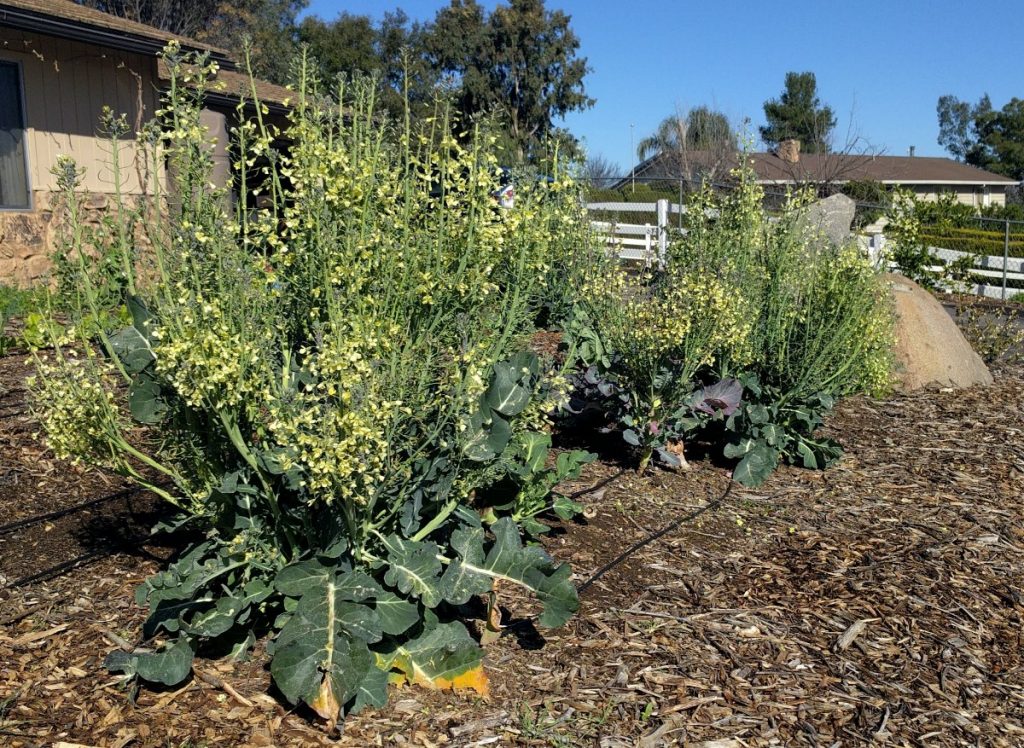
Vegetables
These broccoli plants grew, and were eaten, all through winter. I think winter is the best time to grow vegetables in Southern California, but I do understand that most people think of spring and summer as the time to do a vegetable garden. “Starting a vegetable garden in Southern California” is a post that lays down what I see as the essentials, particularly for our climate.
To save lots of work this spring, consider this: “Don’t dig in your garden.”
It so happens that in the recent March 14 episode of the Davis Garden Show, Don Shor addresses this topic related to both vegetable gardening and planting trees. His experience with, and elaboration on, why we don’t need to mix in amendments and fertilizers each time we plant is a great listen. Skip ahead to the nine-minute mark.
Weeds
Who else loved this winter of abundant rain? Fight the weeds in a shrewd manner rather than through hours of mindless labor: “How to outsmart garden weeds.”
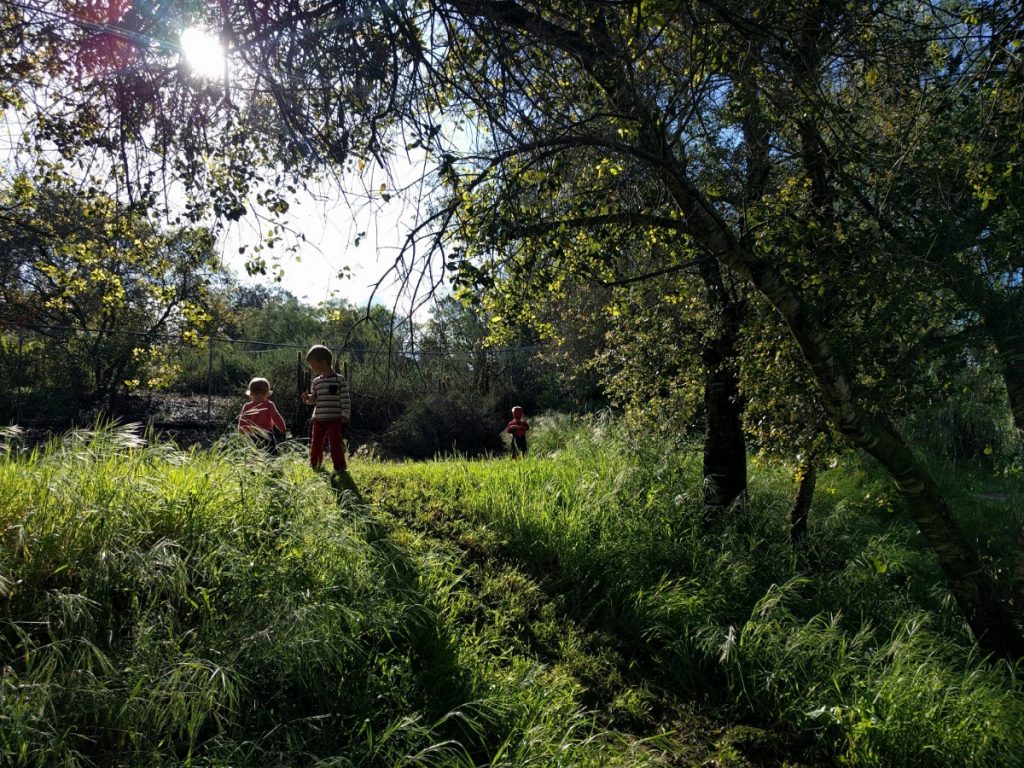
Planting avocados and citrus
March is the best month to plant avocado trees. It just is. Relatively little watering is necessary directly after planting, and the tree gets a solid three seasons of growth before facing any winter cold snaps. See “How to plant and stake an avocado tree.”
This being the case, it’s possible to plant avocados in any month of the year so don’t feel pressured to plant only in this time frame. In fact, you might find that the variety you want is unavailable now. No problem. Plant in another month or two. See “Where to buy an avocado tree.” And you might like to read my post “What is the best kind of avocado to grow?”
As for citrus, spring is also a nice time to plant because the little tree is actively growing and you’ll feel accomplished to see that. Like avocados though, citrus can be planted successfully all year long. I can’t think of a single month in which I haven’t planted a good avocado or citrus tree.
Some of my favorite sweet citrus varieties are noted in “Oranges and mandarins fresh off the tree almost all year.”
Pruning citrus and avocados
Likewise, you can prune citrus and avocado trees anytime, but early spring is my preferred time for most varieties. For many citrus varieties, the fruit is ripe so you can prune and harvest at the same time. See “When and how to prune citrus trees.“
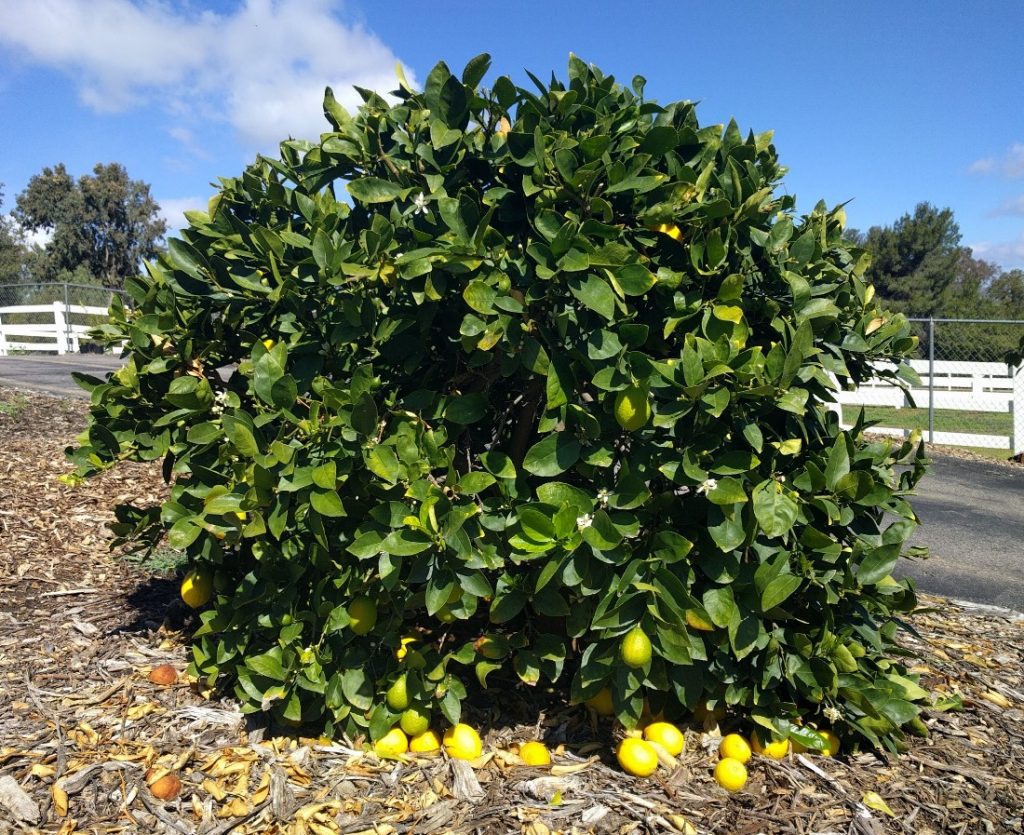
For avocados, a major consideration is sunburn. Prune now and the tree will grow new leaves to protect exposed branches before the heat of summer arrives: “Pruning avocado trees.”
Both citrus and avocados do a lot of growing in early spring, and this growing includes attempts by the trees’ rootstocks to send up suckers. I found a rootstock sucker on my USDA 88-2 mandarin tree yesterday. Check your tree trunks frequently this season: “Beware of rootstock suckers on citrus.”
Thinning fruit
As we get deeper into spring and flowers become fruit on the trees, we’ll need to pay attention to the blessing of trees setting too much fruit. Because of the consistently cool winter, I anticipate fruit set on deciduous fruit trees being heavy. The flowering thus far supports that prediction.

“Oh, the mistakes I’ve made: Not thinning enough fruit from a plum tree.”
Chickens
Spring chicks are now widely available. We will be adding to our little flock in the next couple weeks.
Have you been considering adding some chickens to your backyard but don’t think you have the space? My chickens’ home is only four feet wide by eight feet long. That’s their entire enclosure. I’m writing a post on this small mobile coop that I keep them in, to be published this spring.
But for now you can see the contraption and how our chickens enhance our garden in my post “Chickens: my garden’s little helpers.”
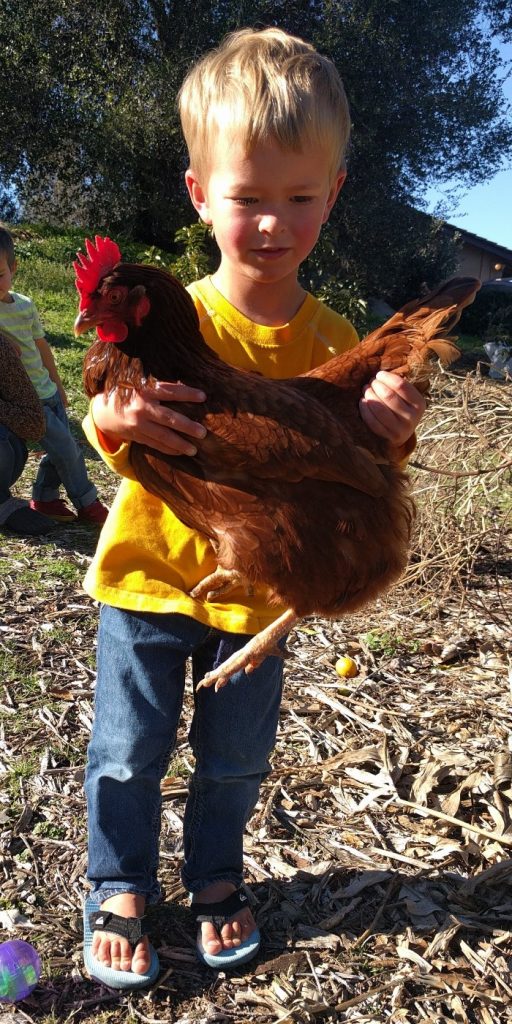

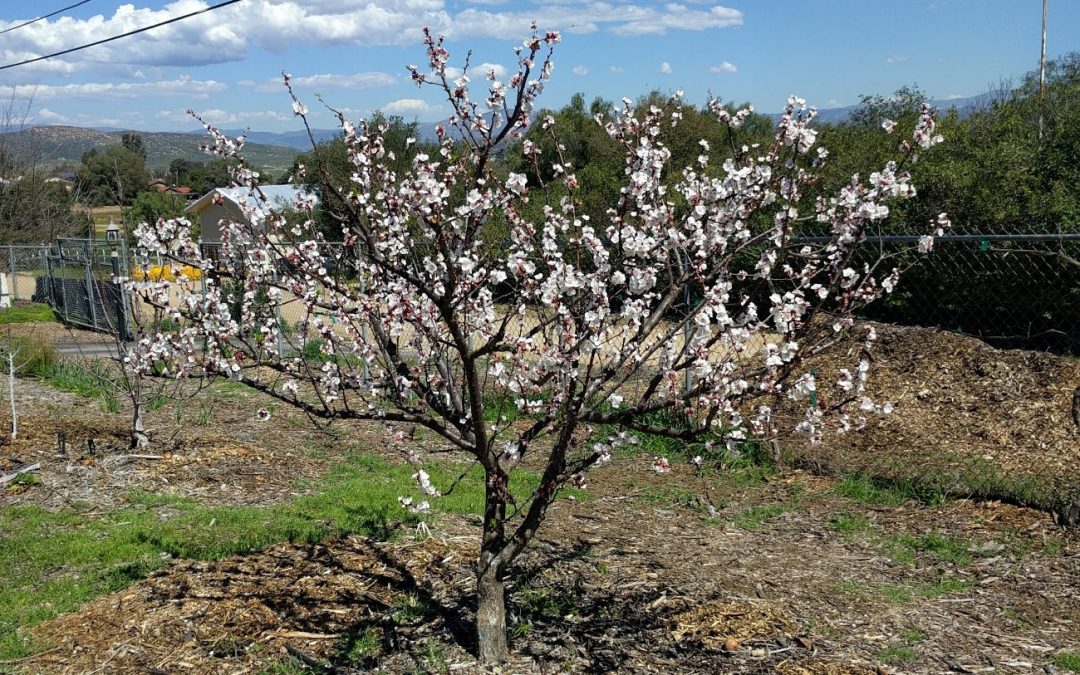

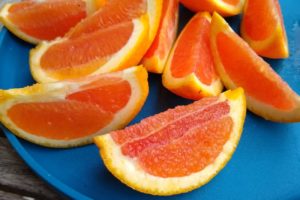
Recent comments